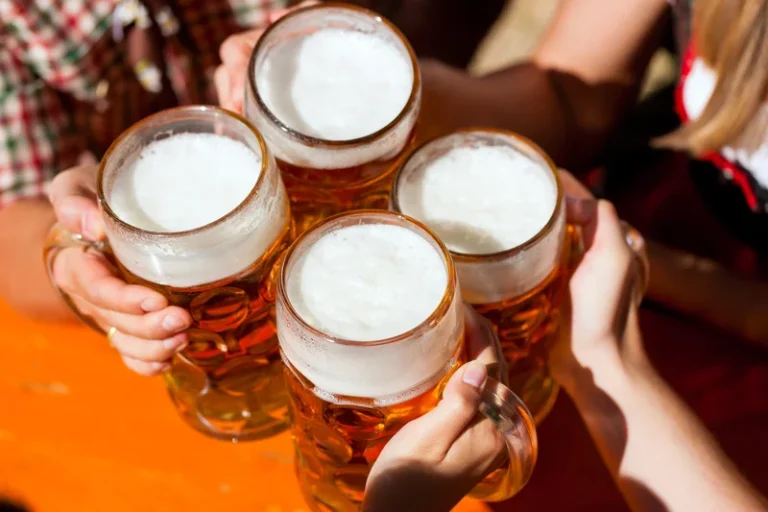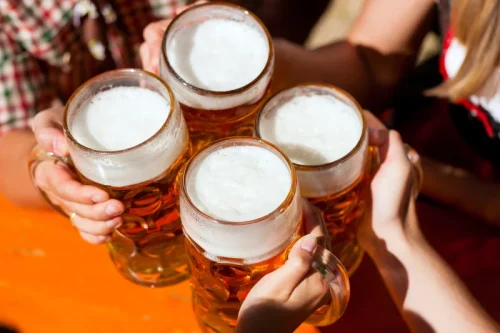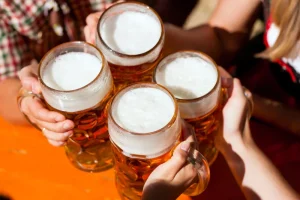
A significant part of how addiction develops is through changes in your brain chemistry. Make sure that any conversation about your concerns does not occur while they are under the influence. Avoid criticizing or shaming them for their addictive behaviors. Instead, say something like, “I care about you and am worried about your safety and health,” and share your observations about their behavior. Substance misuse does not always lead to addiction, while addiction involves the regular misuse of substances or engagements in harmful behavior. However, a person with addiction may not be ready or willing to seek professional medical help, regardless of the negative impacts it is having on their health and wellness.
- The American Society of Addiction Medicine (ASAM) defines addiction as a chronic brain disorder.
- The sooner you seek help, the greater your chances for a long-term recovery.
- Severe withdrawal can lead to dangerous and life-threatening health issues.
- The fact that this critical part of a teen’s brain is still a work in progress puts them at increased risk for trying drugs or continuing to take them.
Who Is Affected By Pathological Gambling?
Someone with an addition won’t stop their behavior, even if they recognize the problems the addiction is causing. In some cases, they’ll also display a lack of control, like using more than intended. Substances and certain activities affect your brain, especially the reward center of your brain. John C. Umhau, MD, MPH, CPE is board-certified in addiction medicine and preventative medicine. For over 20 years Dr. Umhau was a senior clinical investigator at the National Institute on Alcohol Abuse and Alcoholism of the National Institutes of Health (NIH).
What is the Most Addictive Hallucinogen?
Over time, the substances or activities change your brain chemistry, and you become desensitized to their effects. Substances send massive surges of dopamine through your brain, too, as well as certain activities, like having sex or spending money. But instead of motivating you to do the things you need to do to survive (eat, work and spend time with loved ones), such massive dopamine levels can have damaging effects on your thoughts, feelings and behavior. There’s not a single cause of addiction — it’s a very complex condition.

Changes in the brain
Some individuals turn to hallucinogens for self-medication, exploring their perceived therapeutic effects for conditions such as anxiety or depression, although this is not clinically advised. However, these motivations increase the risk of addiction, as repeated use leads to dependency patterns, disrupted mental health, and challenges in managing emotional or psychological well-being. Environment and culture also play a role in how a person responds to a substance or behavior. A lack or disruption in a person’s social support system can lead to substance or behavioral addiction.
What is the outlook for addiction?
- A lack or disruption in a person’s social support system can lead to substance or behavioral addiction.
- Substance use and substance misuse refer to occasional episodes of substance use rather than a chronic, habitual or patterned use that is substance use disorder.
- As with other chronic health conditions, treatment should be ongoing and should be adjusted based on how the patient responds.
- When you use opioids for pain for a long time, for example, you may develop tolerance and even physical dependence.
- Scores less than 3 are consistent with normal alcohol consumption.
Substances are any type of medication or chemical that has addiction potential. Substances target the reward center of your brain and can lead to substance use disorder and life-threatening outcomes if misused. Treatment is available if you need help with substance use or misuse. Drug addiction is a brain disease that falls into the category of substance use disorders.
Enhancing Healthcare Team Outcomes
SAMHSA works to reduce the impact of the most common mental health and substance use disorders on America’s communities. addictive drugs definition Addiction is a chronic (lifelong) condition that involves compulsive seeking and taking of a substance or performing of an activity despite negative or harmful consequences. For a long time, addiction meant an uncontrollable habit of using alcohol or other drugs.

Chemical dependence occurs because neurons in the brain adapt to repetitive exposure to the substance, to the degree that they function normally only when the drug is present in the body. Substances or behaviors linked to pleasurable or euphoric experiences induce surges of dopamine, which serve to reinforce relationships between those substances or behaviors and such experiences. Over time, the brain develops a craving for the pleasurable or euphoric feeling, driving individuals to use the drug or to carry out the behavior again and again. Preclinical research has shown that stress exposures, especially in early life with child maltreatment and regular adversity, enhance drug self-administration and precipitate many relapses in individuals with addiction. However, any ‘stress’ that is prolonged or chronic https://ecosoberhouse.com/ can become unpredictable and uncontrollable, resulting in a loss of sense of accomplishment or adaptability and the development of homeostatic dysregulation. This homeostatic dysregulation creates the potential for drug-seeking behaviors and possibly addiction.

Multiple pharmacological treatments are available for the 2 most common substance addictions (tobacco and alcohol), such as group meetings and psychological and social support. Drug addiction, or substance use disorder, is a mental health condition that can have lifelong impacts. Though it’s a treatable illness, substance use disorder recovery often involves a lifelong cycle of drug addiction treatment relapse (recurrence of use), withdrawal, and abstinence. Diagnosis also involves standardized questionnaires or checklists to assess the severity of hallucinogen use and its impact on daily life.
